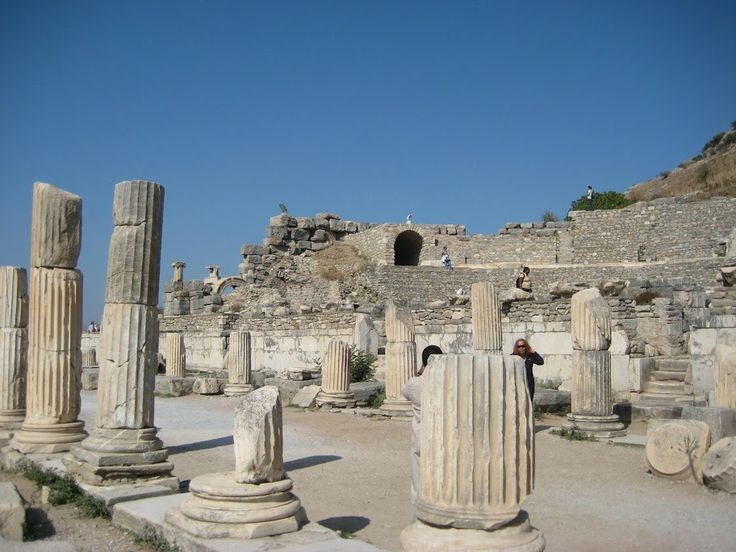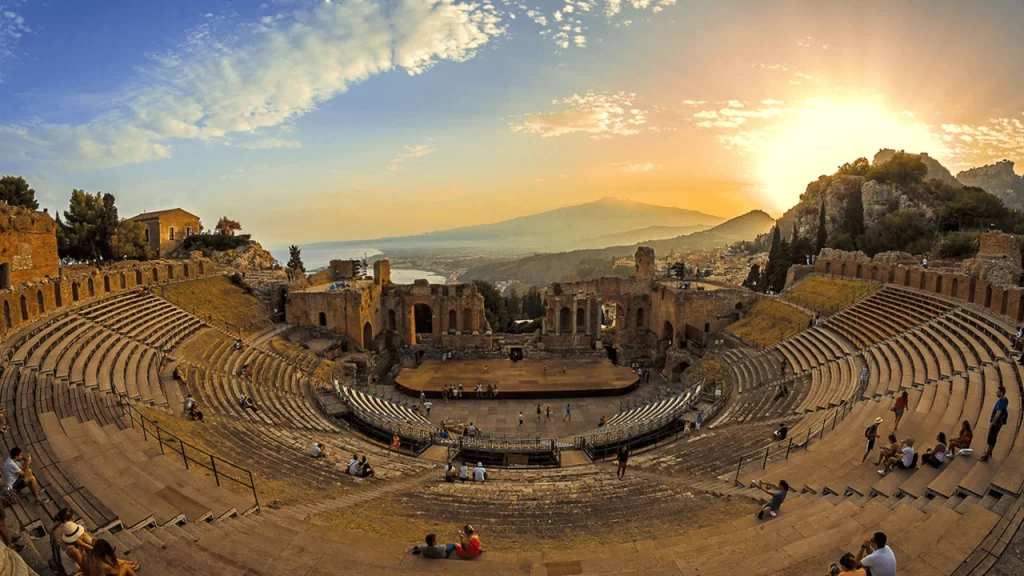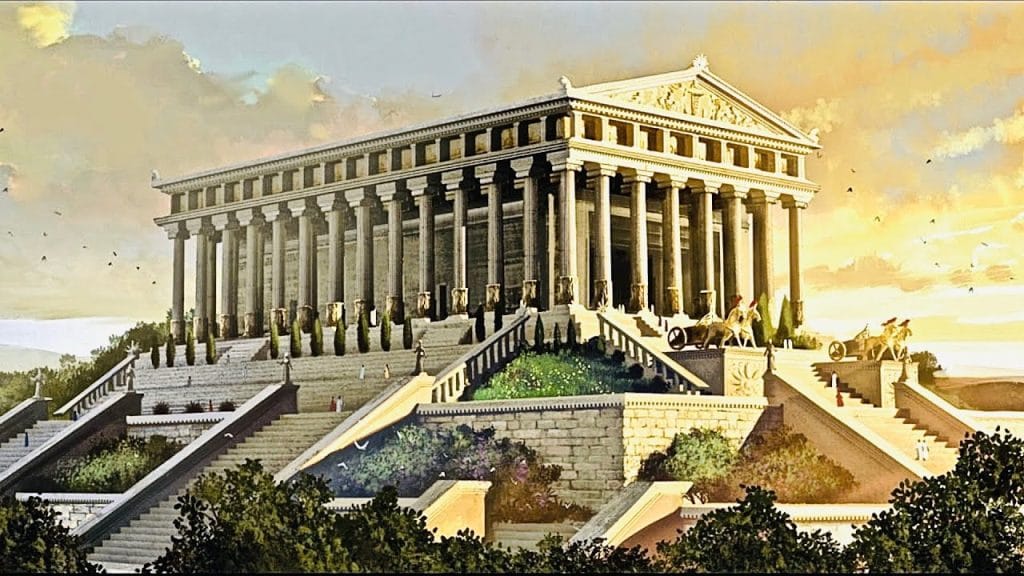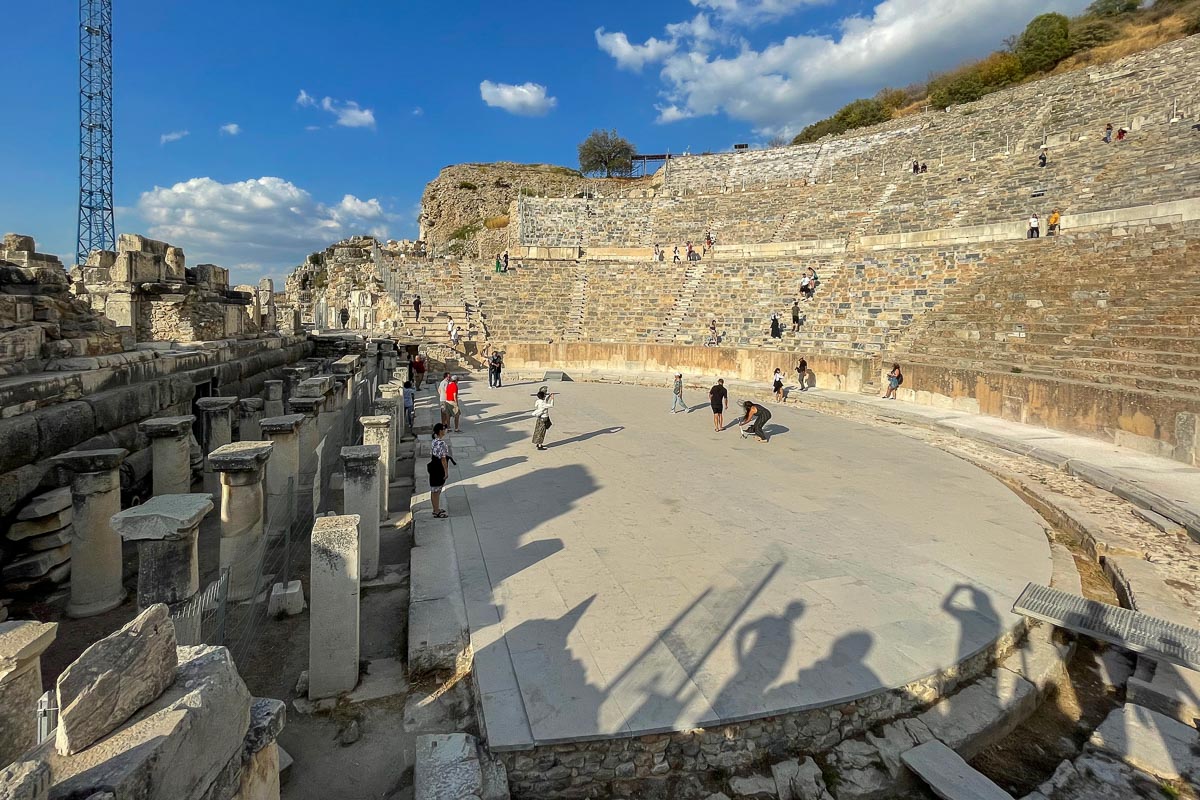Ephesus ancient Roman city: Ephesus, founded around the 10th century BC by Greek settlers, later grew into a thriving Roman metropolis. Over time, it became one of the largest and most influential cities in the Mediterranean world. At its peak, more than 250,000 people lived here, making it a vibrant hub of commerce, politics, and religion.
Moreover, Ephesus gained worldwide fame for housing the Temple of Artemis, one of the Seven Wonders of the Ancient World. Although only a few columns remain today, their historical and spiritual power still inspire travellers and history lovers from around the globe.

A Glimpse into the History of Ephesus ancient Roman city
Ephesus was founded around the 10th century BC by Greek settlers and later grew into a thriving Roman metropolis. Over the centuries, it became one of the largest and most influential cities in the Mediterranean world. At its peak, more than 250,000 people lived here, making it a major hub for trade, politics, and religion.
Moreover, Ephesus gained worldwide fame as the home of the Temple of Artemis, one of the original Seven Wonders of the Ancient World. Today, only a few columns remain, yet their historical and spiritual significance continues to inspire travellers and history lovers from around the globe.
Must-See Ruins in Ephesus: Ephesus ancient Roman city
1. Library of Celsus
Arguably the most iconic landmark in Ephesus, the Library of Celsus was built in 117 AD to honour Roman Senator Tiberius Julius Celsus. At its peak, it held over 12,000 scrolls, ranking as the third-largest library in the Roman world.
Marvel at its ornate façade, decorated with columns, statues, and inscriptions. Then, stand beneath the reconstructed entryway, which creates an illusion of grandeur and depth. Finally, visit early in the morning to avoid crowds and capture soft golden light in your photos.
2. The Great Theatre
Carved into the slopes of Mount Pion, the Great Theatre of Ephesus could seat more than 25,000 people. In the past, it hosted dramatic plays, gladiator fights, and public ceremonies, serving as the social and political heart of the city.
Climb to the top tier for panoramic views of the ruins and the distant harbour. Moreover, its acoustics remain remarkable — even a whisper from the stage can be heard throughout the arena. Today, this grand venue still hosts concerts and cultural events, connecting the ancient past with modern life.

3. Ancient Roman Streets & Terraced Houses
Walk along Marble Street and Curetes Street, both lined with columns, public baths, and fountains that once bustled with Roman life. As you stroll, imagine merchants, philosophers, and travellers filling these vibrant avenues with energy and conversation.
Next, explore the Terraced Houses, famous for their mosaics and frescoes that show the luxurious lifestyle of the Roman elite. In addition, you’ll see public latrines, agoras, and temples — each one showcasing the skill and creativity of Roman engineers.
The Temple of Artemis: A Lost Wonder: Ephesus ancient Roman city
Although only one reconstructed column remains today, the Temple of Artemis once stood as a magnificent masterpiece that drew pilgrims from across the ancient world. In fact, this sacred site honoured Artemis, the Greek goddess of hunting, fertility, and nature.
Moreover, the temple was one of the Seven Wonders of the Ancient World, admired for its beauty and spiritual power. During the Hellenistic period, it became a major pilgrimage centre that welcomed worshippers and travellers from distant lands.
Today, the ruins sit just 10 minutes from the main Ephesus site, making it a worthwhile stop for history lovers and photographers. As a result, visitors can step back in time and imagine the grandeur of ancient Greece.

Travel Tip: Hire a Local Guide or Use an Audio Tour
To truly appreciate Ephesus, hire a licensed local guide or download an audio guide app. This way, the ancient ruins come alive with stories of early Christianity, Roman innovation, and political intrigue. In fact, Ephesus is mentioned in the Bible, adding a spiritual depth to your visit.
Moreover, exploring with a guide helps you see beyond the stones and marble. Every pillar, theatre, and mosaic reveals a new chapter in the story of this once-great Roman city.
💡 Pro Tip
Combine your visit with nearby attractions like the House of the Virgin Mary, St. John’s Basilica, and the Ephesus Archaeological Museum in Selçuk. As a result, you’ll enjoy a full day of discovery — one filled with history, faith, and timeless beauty.
Best Time to Visit Ephesus: Ephesus ancient Roman city
🌸 Spring (April–June)
Enjoy mild weather and blooming landscapes that make sightseeing a joy. In fact, spring is one of the best times to visit, offering comfort and color before the summer heat arrives.
🍁 Fall (September–November)
During fall, fewer crowds and golden light create a peaceful atmosphere for travel and photography. Moreover, the cooler temperatures make it easy to walk and explore without feeling rushed.
☀️ Summer (July–August)
Summer is the most popular season, but it can be hot and humid. Therefore, plan your outings early in the morning or later in the evening for a cooler and more relaxing experience.
🕰️ Opening Hours
The site is open daily from 8:00 AM to 7:00 PM, though hours may vary by season. As a result, it’s always best to check the schedule before planning your trip.
💵 Entry Fee
The entrance fee usually ranges from 200 to 300 TRY. In addition, prices may change slightly during peak tourist months or special events. For that reason, confirm the latest rates before you go.
Where to Stay Nearby
🏡 Selçuk Town
If you’re looking for an authentic and budget-friendly stay, Selçuk offers a true local vibe. Moreover, it’s located very close to Ephesus, allowing you to explore the ruins easily and avoid long travel times. It’s the perfect base for history lovers who enjoy a quiet atmosphere.
🌊 Kuşadası
This coastal resort town is perfect for travellers seeking comfort and sea views. In fact, it combines relaxation, nightlife, and luxury stays — all within easy reach of Ephesus. Here, you can spend the day at the beach and explore ancient sites by afternoon.
🌆 Izmir
Finally, Izmir suits those who want to see more of the Aegean coast along with Ephesus. With its modern city vibe, shopping, and amazing food scene, it offers a great balance of culture, comfort, and convenience.
Final Thoughts: Walk in the Footsteps of the Ephesus ancient Roman city
Ephesus isn’t just a pile of ruins — it’s a living story of Roman architecture, mythology, politics, and culture. In fact, every stone and column still whispers tales of a civilization that shaped the ancient world.
Whether you’re a history lover, spiritual seeker, or curious traveler, this ancient city offers a deep connection to the past and leaves a lasting mark on the soul. Moreover, walking through its streets feels like traveling back in time.
From the grandeur of the Library of Celsus to the quiet remains of the Temple of Artemis, Ephesus invites you to see, feel, and imagine the glory of ancient life.
